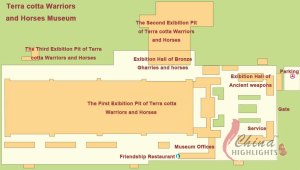On August 1st, Ana Escobedo, the magnificent high schooler from california that has been spearheading the SAVE Kashgar Facebook initiative and petition (Petition and Cause Page both linked on the RIGHT —–>) published an article on SAFECORNER about how she got involved in the Kashgar initiative, and what protecting worthwhile cultural heritage sites means to her. Check out her well-written article HERE.
I have selected and reproduced here a few choice excerpts from her essay in order to tantalize your reader tastebuds:
To raise awareness for the cause and to rally supporters behind SAFE’s message I created a Facebook Cause page which I named “Save Kashgar ”. I loaded it with whatever information I had available to me at the time, which was only a few articles and the information I had gained from the SAFECORNER editorial. Later I was able to set up a Flickr group to create a photo documentation of the Old City. I also set up a petition appealing to the Chinese Cultural Minister to save what remained of the cultural heritage of this city. However, it quickly became apparent to me that this was so much more than a demolition of a city. It was the destruction of the Uyghur culture. A culture that had existed for hundreds of years in this location was being wiped out.
In an effort to find recruits to my newly formed cause page I reached out to the Uyghur and Archaeology related groups on Facebook. It was at this moment when I discovered I was not alone in this fight. I went to every group I could think of to let them know about what I was doing, but everywhere I went I found links to other Kashgar related Facebook pages. Groups such as “Save Kashgar, Xinjiang, China from Demolition!” and “Saving Kashgar” encouraged followers to raise their voices against the destruction. The creator of “Save Kashgar, Xinjiang, China from Demolition!,” Nikhat Rasheed, is responsible for aYouTube video further demonstrating the importance of Kashgar to the Uyghurs and the world. Her group has also sponsored an event in Toronto, Canada to show solidarity with the Uyghur people. On July 1, 2009, a group of Uyghurs performed a traditional dance in celebration of Canada Day. Members of this Facebook group attended, furthering the public display of unity with the Uyghur cause. Ms. Rasheed has also written a wildly popular petition that has raised almost 7,000 signatures in a short period of time. Another Facebook Cause page “Save Kashgar!,” created by dedicated advocate Miriam J. Woods, has generated a petition that has already received over 1,000 signatures. This petition asks President Obama and Congress to appeal to the Chinese government to cease the demolition. Her cause page is raising money for the Uyghur American Association/Uyghur Human Rights Project.
Before I saw the issue from my point of view as an archaeologist, but after these varied and passionate communications I saw that this was a human crisis. What has amazed me most over these past two months has been the number of people reaching out to me, telling me their story, letting me know that Kashgar was important to them too.
People like Marc Forster, the filmmaker responsible for films such as “Monster’s Ball,” “Finding Neverland” and “Quantum of Solace” are rallying behind the cause.
Kashgar has evoked an impassioned and ever-growing response, in me and many others. More and more people from around the world are reaching out and speaking out against this demolition and the destruction of a culture.
As for me, my heart goes out the Uyghurs who are losing the heart of their civilization. I will continue to support in the best way I can. My cause page is closing in on 700 members and it is my hope that I can continue to reach these people and keep them united in this work against this cultural and human crime.
Thanks Ana, for sharing with us not only your experience working on this important project, but also helping to organize and unite all the different interest groups so that we may have a common goal.
– Chiarch







 (Photo courtesy of
(Photo courtesy of  (Photo courtesy of
(Photo courtesy of